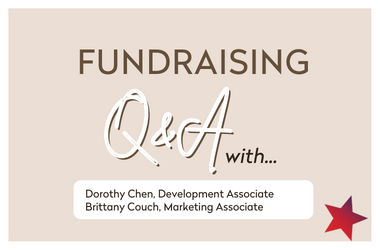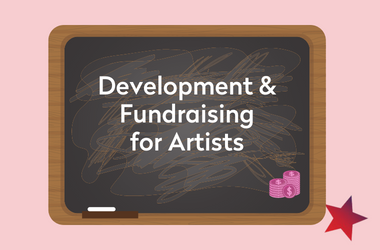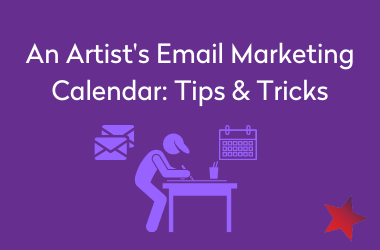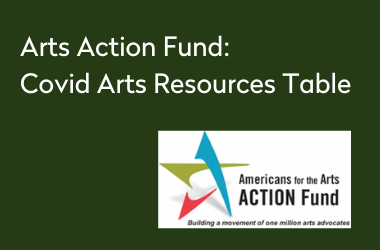Grant Writing for Individual Artists: Creating your Grant Proposal Toolkit
Creating your Grant Proposal Toolkit
Grant writing for individual artists has changed in the last twenty years. Most funders no longer want a traditional narrative grant proposal. Instead, they ask that artists respond to a series of questions through an online application portal, with strict character and word limits. Every funder has different requirements for their grant submissions, but there are many commonly requested components that can be written in advance – think of it as your grant proposal toolkit, which consists of a series of written components can be used for multiple grants and multiple purposes.
Grant Writing Components for your Toolkit
There are several key grant writing items that you will find in almost every grant application – in fact, you may already have some of these written. If you do, take some time to review and update them. If you don’t, use some of the writing prompts below to get your creative juices flowing! Because every proposal has different character or word limitations, consider writing multiple versions of different lengths that can then be edited down – start with a 5,000-character version, and then edit it down to 2,500 characters.
Artist biography – This is a detailed description of your professional career.
- Describe yourself as an artist. What is your artistic medium or discipline? What/who are your major influences? What motivates you to create? What is your process? What professional experience do you have? Has any of your work been produced and if so, where and when? Where did you go to school and who have you studied with? Have you won any awards, been awarded grants or fellowships? What makes you and your work unique?
Artistic statement – Describe your art
Project description – Describe the project
Timeline – Describe the timing for the creation, rehearsal and production of your project. Is any portion of it complete or is it entirely new work? When will it be shown/performed? Include dates.
Community or audience engagement and impact – Describe how your project will relate to or engage your community.
- Identify your community (geographic or cultural). How and why will this project benefit your community? Are there community benefits or impacts of the project? Are there educational or social components to the project and why are they relevant now? How will you engage community members in your project?
Marketing – List the ways that you will market your project to your community and to the general public.
- Include social media, emails, flyers, listings, postcards, media releases, advertisements.
Project budget – Outline your budget. This is a realistic, detailed, line-item list of expenses, earned and contributed income, and in-kind support for your project.
Evaluation – Describe how you will evaluate the success of your project and what outcomes you are hoping to achieve.
- How will you measure success? How will you evaluate whether or not you have achieved your stated goals? What data will you collect to measure your impact? How will you use that data to make any mid-course corrections?
References/Letters of support –While you can’t necessarily put these together in advance, you should identify some professional references (venues? presenters?) who have agreed to discuss your work with a funder or write a letter of support.
Work samples and description – Your work sample should include up to 10 minutes of good quality video or audio, and you should be able to identify specific segments of 3, 4 or 5 minutes to accommodate requests for shorter work samples.
- As noted by the MAP Fund, the most helpful work samples capture an artists’ unique sensibility and area of investigation, especially as it relates to the proposed work. Take some time in your work sample description to point out the ways in which the work sample is specifically related to the work you are proposing. Don’t assume evaluators and panelists will see the connection. The aim is to bring the panel as close as possible to the actual experience of being in your audience as possible.
Describing your work and verbalizing what may be very conceptual artistic ideas is not easy, so you should give yourself plenty of time to write, edit and rewrite drafts of each component in your grant proposal toolkit. Once you’ve developed language that you feel comfortable with and that clearly conveys your artistic ideas, share it with some close friends or artistic associates whose opinions you trust. Listen to their feedback and remember that your goal is to draft language that others can easily understand.
Tips for successful grant writing
- Update your toolkit regularly.
- If there are grants you know you will want to apply for, including any annual community/city/state funding opportunities, go to the funder’s website and download their old applications to understand what they want and what their word or character limitations are. For example, The MAP Fund has an excellent guide that walks you through every step of their application.
- Proofread your drafts, put them down for a day or a week – and then proofread again. Repeat.
- Download online applications and respond to all questions offline, using the Word Count feature of your word processing program to make sure your response is within word or character limitations. Then cut and paste your responses into the online application. This way, you won’t lose your work if the system crashes midway through your proposal.
- Submit your online applications at least a day in advance of the deadline in case of technical problems.
- Save or print out a copy of your proposal before you submit.
- Remember, word or character limitations – and deadlines – are firm.
If you need to submit a traditional, narrative proposal, Candid Learning has excellent resources on how to structure your proposal, along with examples.
NEXTSTEPS GUEST AUTHOR: SUSAN LATHAM | 11.30.20
Susan Latham is a professional fundraiser with experience in the performing arts, human services and higher education. She is a member of Pentacle’s Board of Directors.
Related Blog Posts
Planning A Fundraising Event
Planning A Fundraising EventEvent fundraising can be a great way to raise funds There are a number of ways to fundraise money for an organization or cause. One of the most collaborative ways to fundraise is by hosting an event. There are many steps to consider when...
Development & Fundraising for Artists
Development & Fundraising for Artists How to Obtain Individual and Institutional Donations Development & fundraising through individual and institutional donations. Everyone needs money, and if you are an artist, nonprofit, or dance organization, a good chunk...
An Artist’s Email Marketing Calendar: Tips & Tricks
An Artist's Email Marketing Calendar: Tips & TricksTips and tricks for creating an email marketing calendar for your arts organization Email marketing calendars are critical for most enterprises, and they deserve a high level of organization and care. In fact,...
3 Accounting Terms Every Artist Should Know
3 Accounting Terms Every Artist Should Know These terms are essential for artist accounting Chart of Accounts It is important that your organization's money moves are informed and precise. In coordination with your Budget and Financial Reports, a consistent Chart of...
Arts Action Fund: Covid Arts Resources Table
Arts Action Fund: Covid Arts Resources TableAmericans for the Arts Action Fund Summarizes Covid Arts Relief Americans for the Arts Action Fund is helping artists and artistic entities stay up to date on Covid Arts Relief. This organization has been consistently...
Finding the Right Grant Funders for You: Essential Tips
Finding the Right Grant Funders for You: Essential TipsGrant writing means finding the right grant funders for your organization Getting started with grant writing (or Institutional Development) is a daunting process, but it’s necessary in order to achieve long-term...
Pentacle’s nextSteps is supported, in part, by public funds from the National Endowment for the Arts, the New York State Council on the Arts with the support of Governor Andrew M. Cuomo and the New York State Legislature, and the New York City Department of Cultural Affairs in partnership with the City Council. Pentacle receives private support for nextSteps from the Booth Ferris Foundation, the Howard Gilman Foundation, the Rockefeller Brothers Fund, and the New York Community Trust.







